What Is a Machining Center?
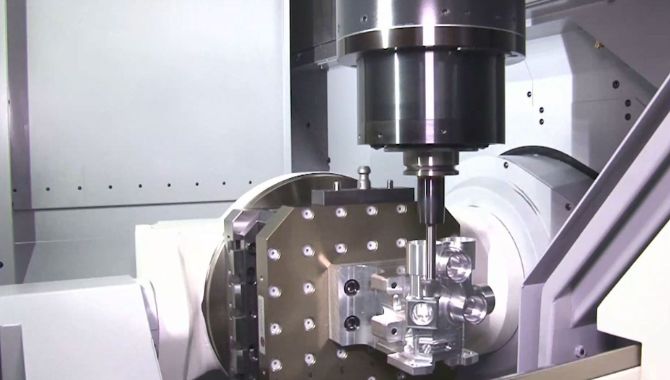
A “machining center” is a type of machine that can perform more than one operation, together with milling, drilling, boring, and tapping, all without having to change the workpiece setup. These machines are crucial for machining components and metal parts.
Key Components of a Machining Center
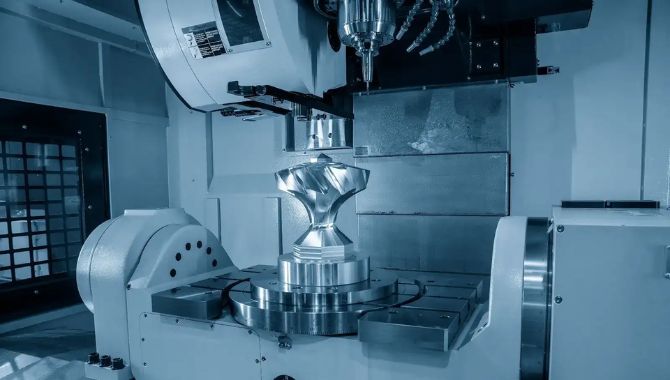
First, you’ll notice the spindle, which rotates and holds the cutting tool simultaneously. It operates at multiple speeds and is powered by a motor. Machining centers also have built-in tool changers that enable computer-controlled tool changes.
Next, the workbench securely holds the workpiece in place to ensure it does not move while process operations are carried out under the supervision of the CNC controller. Critical pieces also need proper lubrication for moving parts to minimize damage and a cooling device to keep temperatures from becoming too high.
Essential Machining Operations for Manufacturers
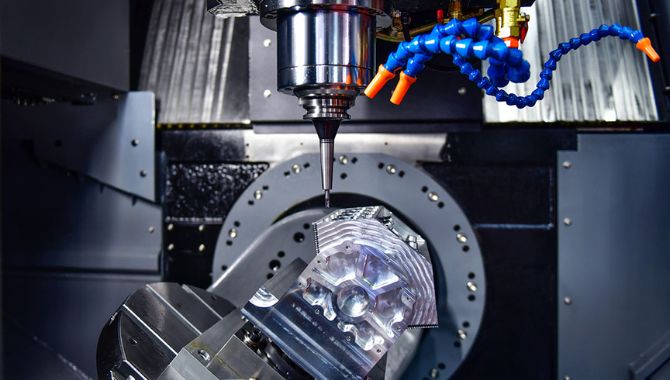
There are a many essential techniques that you may use to perform some basic yet essential operations which assist in boosting the productivity and accuracy of manufactured parts.
- Milling: Can shape a workpiece with the help of rotary cutters. The operation is flexible, being able to carry out an array of complex shapes operations and features whilst retaining high fidelity.
- That is, Turning: In this operation, You can revolve the workpiece around the cutting tool to produce the desired shape. It is necessary for manufacturing the cylindrical type parts like gears and bolts.
- Drillng – You can drill round holes in workpieces using a drill. It is essential for preparing parts to be assembled and machined further.
- Boring: Boring takes an existing hole and increases that diameter with a certain size for finishing. Extremely important for its application fine tolerance and finishing surfaces.
- Grinding: You can use grinding to remove material from a workpiece while achieving the desired finish and dimensions that are precise. To a great degree of accuracy, products are finished machined and polished.
- Tapping –Another essential machining operation for a manufacturer includes tapping. It is a drilling operation used to create internal threads in a hole. This process is essential for manufacturers who need to produce threaded holes for fasteners that include bolts and screws.
Sector-Specific Uses of Machining Centers
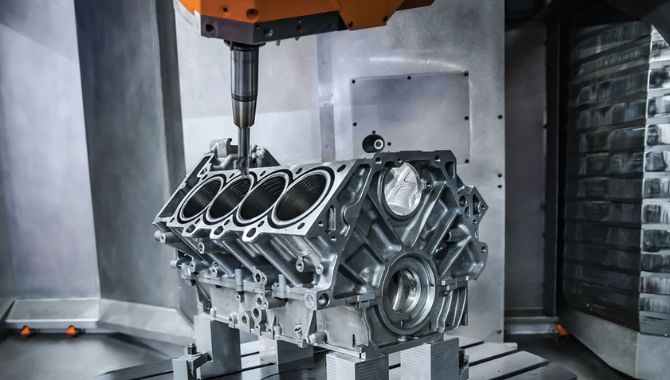
You can use cachining centers in a wide array of industries and manufacturing applications.
Some of the principal uses include:
Automotive Industry
In the automotive industry, machining equipment is important for the production of engine connected parts, transmission boxes and various important tools. These machines are especially valuable in mass production where consistency and speed are essential. For example, components such as cylinder heads, engine blocks, and gears should be manufactured with high precision to ensure that the engines function properly.
Food Processing Equipment Manufacturing
Machinery components such as mixers, grinders and conveyor structures require precision manufacturing to meet hygiene standards and ensure environmentally friendly operation. Machining centers are used to create stainless steel components with clean surfaces that can be smooth to easy and corrosion resistant. .
Medical Device Manufacturing
The clinical instrument industry closely depends on machining centers for the production of extremely complicated and specific components such as surgical units, implants and diagnostic systems. Materials used in scientific devices, such as stainless steel, titanium and advanced polymers, require special processing to ensure certain biocompatibility and functionality. Machining centers offers the precision needed to produce ingredients that meet stringent regulatory requirements.
Gas and Oil, Nuclear and Renewables
Machining centers in the oil and gas industry are deployed for the manufacture of parts related to exploration, drilling, and production. They are applied in the production of valve bodies, drilling tools, pump components, and riser systems, which have been designed to resist the harshest environments.
Textile Machinery Production
In the textile industry, manufacturing equipment, along with looms, spinning machines and knitting machines, requires high-precision components to ensure ease of operation and production at an excessive pace. Machining centers are used to produce components such as gears, shafts and rollers with the tight tolerances important to these machines.
Jewelry Manufacturing
The jewelry business is another region where machining centers are increasingly being used, mainly for the growing custom and complex designs. With the increasing pressure of personalized rings and complicated designs, machining equipment equipped with precise options and CNC (Computer Numerical Control) machines allow jewelers to deliver unique pieces with the best features that would be difficult to obtain by hand. These machines can work with many materials, including gold, silver, platinum and even precious stones, ensuring that the final product meets the excessive standards of quality and precision required in the jewelry market.
All this makes machining centers a real necessity in modern manufacturing. You will find them versatile, taking care of variety of operations.
Business Advantages of Machining Centers
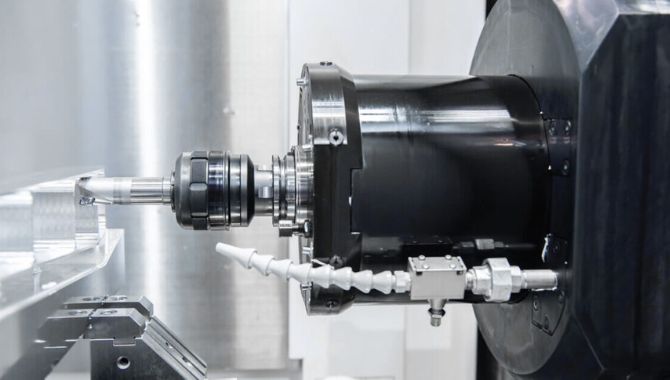
Machining centers have various business advantages. Some of them include:
Know For Their Versatility and Flexibility
You can process a large number of variable material types and various geometries shapes with the help of a Machining centers. This great flexibility of the machines enables companies to adjust and adapt changing market demand by producing the latest market equipments without investing in different and new company equipments.
They Helps In Increasing Efficiency
You can increase production efficiency from Machining centers by offering your clients one setup solution with multiple operations. This will reduce manual intervention, set-up time, production cycle time, and finally bring down the labor costs.
Yields High Accuracy and Quality Results
These centers provide excellent accuracy and consistency to deliver products of superior quality with low variability. The machines are necessary for you in order to meet demanding industry standards. They helps in reducing defects due to their highly calculated operations which helps the company to achieve higher customer satisfaction and less errors.
Promotes in Waste Reduction
Given the advanced technology, machining centers help you to optimize material usage, hence reducing waste. Accurately cutting the materials and setting-up time ensures efficient usage of material, These machine offers better cost savings and more environmentally friendly production.
Helps in Cost Cutting
The machining centres, with their efficiency and accuracy, you can reduce overall labor and material costs. By minimizing manual processes and decreasing the potential of errors, you can use these machines at lower operating costs. This will indirectly increased profitability of the company in the long run of their businesses.
Promotes Higher Productivity
Machining centres allow for automation and integration into other manufacturing systems, increasing overall productivity. The ability of running without stops during off-duty hours allows more production output and less downtown time.
Scalability
Machining centres will, therefore, enable you to scale your production either up or down in relation to demand. Besides, they allow easy adjustment to production volumes without configuration. At the same time, they promote business growth and respond to changes in the market.
Enhanced Safety
Automated machining centres reduce manual handling and complex setups, thereby improving workplace safety. They contribute to a safe working environment by minimizing human error and hazardous manual operations.
Less Lead Times
You can greatly reduce lead times by making production processes much easier while increasing accuracy. Faster production and quicker turnarounds mean better ability to meet tight deadlines and deliver to customers’ needs.
Competitive Advantage
The more advanced machining centers can bring in the investment, the more you as a comapny produces better product quality, faster turnarounds. Every company or business is now looking for more cost effective solutions which could increase the efficiency of those operation and at the same time cutting costs.
These machines are the best options in such situations. The technological advantage of these machines helps companies attract more clients and due to the number of operations they could perform at a steady pace. The machining centre benefits overall business success and growth by improving efficiency, quality, and economy.
Selecting the Right Machining Center for Your Business
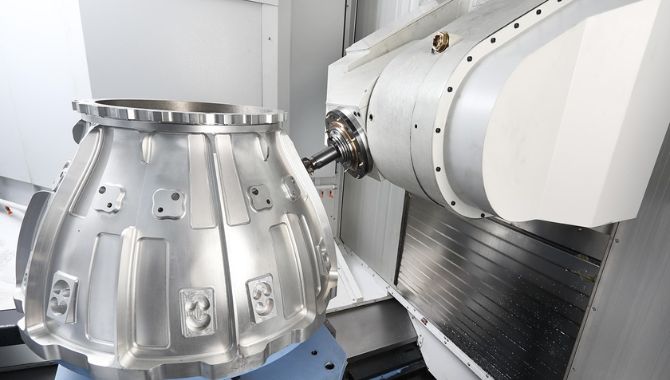
Choosing the proper machining center for your organization includes finding one that suits your price range and meets your precise wishes. Consider these subsequent factors to narrow down your alternatives and pick out the best machine for your application.
One thing that is usually common in these type of machines is the number of axis. For selecting the right machine for your business needs, You have to keep the number of axis in mind. Let us explain in more detail below:
- 3 to 7 Axes: As we have mentioned above, Machining centers come with varying numbers of axes, typically ranging from 3 to 7. The most common machines feature 5 axes, which offer a good balance between functionality and cost.
- 3 Axis Machines: These type of machines are often used for less complex parts. They can be a more economical choice as compared to the other 5 or 7 axis machines. The main reason is that these machines operate with only 3-axis milling, combined with two rotary axes for orientation.
- 4-Axis Machines: This is similar to 3 access machines, just with some slightly differences.In 3 axis machines, The direction of the cutting tools stays fixed during the entire operation whereas in 4 and 5-axis machines, the workpiece attached to the device can also be moved. These machines are generally less costly when you compare them to 5-axis machines.
- 5-Axis Machines: This configuration is ideal for components that are too much complex. Due to that, These type of machines are relatively expensive as compared to the other ones. Referring to the machining center that has 5 Axis, the cutting tool works and moves across the 3 different linear axes which X, Y and Z. At the same time, You can also rotate this machine on both A and B axes.
Spindle Orientation also plays a vital role when you are selecting the right machining center for your business needs:
- Vertical Spindle: This type of orientation is more appropriate for the tasks in which the cutting tool approaches the workpiece from above. Due to it’s direction of approaching workpiece from above, It’s a go-to choice if someone is looking for grinding dies and machining tool parts.
- Horizontal Spindle: This could be the best choice for you where cutting at low angles is required, this orientation is beneficial for milling slots and shaping flat surfaces. Horizontal machines excel at coping with huge parts and complex geometries and facilitate efficient chip elimination.
Assess the Size of the Machine:
- Workshop Space: Make sure the machine will fit into your workshop or manufacturing facility. Larger machines may also offer additional skills, but require more space.
Integration With Other Production Equipment
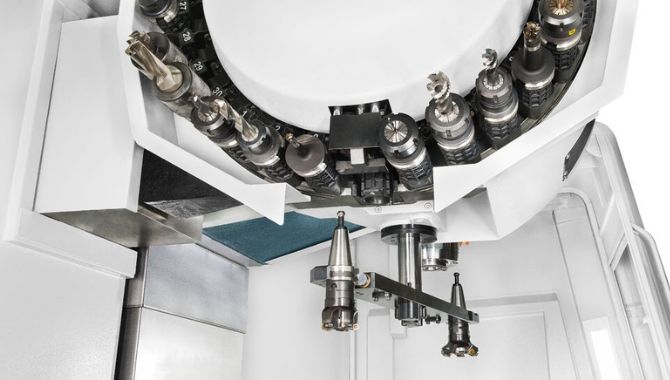
Integrating machining centers with other production equipments can help in increasing the efficiency and productivity. You can integrate these machines with the following equipments:
- Can Be Used With Production Lines: You can use cachining centers with CNC lathes, grinders and connecting structures for smoother transitions in production and reduced downtime.
- Can Be Combine With Automated Workflows Equipments: You can combine machining centers with robots and conveyors to automate fabric handling and reduce management tasks.
- Can Be Used As a Centralized control: Machining centers uses centralized systems to manage multiple machines and systems from a single interface, simplifying operation and monitoring.
- Connects With Inspection Equipments: You can connect them with inspection equipment to confirm component dimensions and ensure tremendous performance.
- Real-time Data Sharing: Integrates with fact series structures to monitor performance and make informed operational choices.
- Integrates With Manufacturing Execution Systems (MES): You can integrate them with MES structures for real-time tracking, inventory management and planning, aligning production tactics.
- Predictive maintenance: Connection with preservation device to display the condition of the machinery and prevent unexpected errors.
FAQ’s
What Should I Do if the Machining Center Is Not Producing Accurate Shapes of the Surfaces?
You can start by checking the cutting tools for wear or damage. Check spindle alignment and look for excessive vibration. These could possibly the main 2 reasons of the machining centers not producing the accurate shape.
How Would I Know if There’s a Spindle Failures in My Machining Centre?
Signs of spindle failure include unusual noises, excessive heat and vibration during operation. You can use diagnostic equipment such as vibration evaluation and thermal imaging to determine the problem.
Why Is My Machining Center Experiencing Excessive Vibration?
Excessive vibration can be caused by misaligned components, worn bearings, or improper tool stability. You have to do a thorough review and readjust or update elements as needed.




